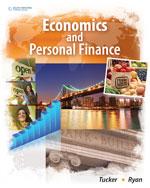Answered step by step
Verified Expert Solution
Question
1 Approved Answer
The risk-free rate is 4%. A risky portfolio, the Kelly Fund, has an expected rate of return of 11% and a standard deviation of 21%.
The risk-free rate is 4%. A risky portfolio, the Kelly Fund, has an expected rate of return of 11% and a standard deviation of 21%. There is another risky portfolio, the Faust Fund, with an expected rate of return of 7% and a standard deviation of 16%. The correlation coefficient between the returns of your risky portfolio and this new risky portfolio is 0.25.
- What is the Sharpe ratio of the Faust Fund?
- Despite the fact that one of the risky funds, either Kelly or Faust, has a superior Sharpe ratio, the relatively low correlation between the two funds may mean that combined investment in the two risky portfolios may provide a better Sharpe ratio. Find the equation in the text for the optimal portfolio and solve for the weights invested in Kelly and Faust that get you this portfolio.
- What is the Sharpe ratio of the optimal portfolio?
- If your client wants the same expected return as in question 2B above, what would be their weights in the optimal risky portfolio and the risk-free rate?
- What would be the standard deviation of your clients complete portfolio now, using the optimal portfolio as the risky portfolio?
Step by Step Solution
There are 3 Steps involved in it
Step: 1

Get Instant Access to Expert-Tailored Solutions
See step-by-step solutions with expert insights and AI powered tools for academic success
Step: 2

Step: 3

Ace Your Homework with AI
Get the answers you need in no time with our AI-driven, step-by-step assistance
Get Started


